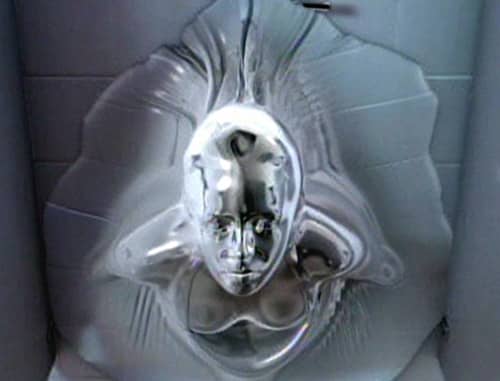Creating a new class of electronics that look like and feel like soft natural organisms has gotten the attention of researchers for a great number of years now. To this end, mechanical engineers at Carnegie Mellon University are working on a fluidic transistor. This is made out of a metal alloy of indium and gallium, which is liquid at room temperature. This research could turn liquid computers into a reality.
The only prior example of any liquid electronics is a microswitch made up of tiny glass tubes with a bead of mercury inside. The mercury closes the switch when it rolls between the two wires. The fluidic transistor is much more complex than that and is made of a liquid metal that is not toxic, allowing it to be fused into rubber to create stretchable circuits.
Whereas the circuit was closed by tilting the vial in the mercury switch, the fluidic transistor works using the direction of the voltage. The direction directs whether the circuit is open or closed. When the flow is in one direction, the metal droplets combine to close the circuit. Reversing the direction causes them to split, opening the circuit.
The researchers Carmel Majidi and James Wissman from the Soft Machines Lab at Carnegie Mellon call it the fluidic transistor as opening and closing the circuit allows it to mimic one. This is due to the phenomenon of capillary instability. They say that inducing this instability to ensure seamless transition was the hardest part. “We see capillary instabilities all the time,” says Majidi. “If you turn on a faucet and the flow rate is really low, sometimes you’ll see this transition from a steady stream to individual droplets. That’s called a Rayleigh instability.”

The research engineers tested these droplets in a sodium hydroxide bath and found a relationship between the voltage and an electrochemical reaction where voltage produced a gradient in the oxidation on the droplet’s surface, altering the surface tension and causing the droplet to split in two. These properties were very much like a transistor as well.“We have these two droplets that are analogous to source and drain electrodes in a field-effect transistor, and we can use this shape programmable effect to open and close the circuit,” says Majidi. “You could eventually use this effect to create these physically reconfigurable circuits.”
According to the researchers, these fluidic transistors will open many new avenues towards the development of miniature liquid computers. These liquid computers will not only be biocompatible but could allow materials to be reconfigured to change their functions or bypass damaged areas.
“It could be on a structure that’s undergoing some very large physical deformations, like a flying robot that mimics the properties of a bird,” says Majidi. “When it spreads its wings, you want the circuitry on the wings to also deform and reconfigure so that they remain operational or support some new kind of electrical functionality.”


